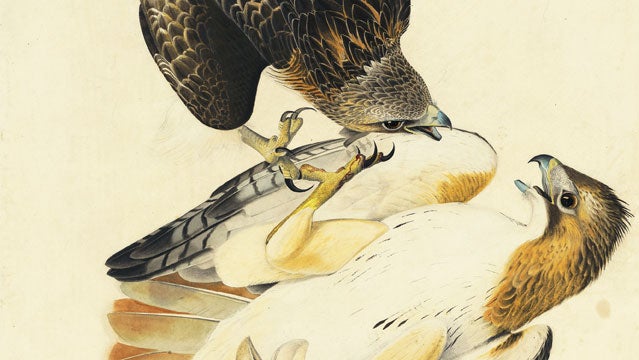Right now, somewhere in New York City, some corner of Texas, the mountains of North Carolina, or in a house in Portland, Oregon, the story of contemporary America is being written about, filmed, or painted. The art of today will be the historical documents of tomorrow, telling future generations what the here and now was like.
Plaid and Canvas
⇢��The Queen of the Hunt
⇢��The Allure of Lures
⇢��Requiem for the Station Wagon
⇢��For the Love of Tweed
⇢��When you read Herman Melville’s Moby-Dick, you get so much more than a story about a fanatical captain chasing a whale; you get the story of our country less than a century after its founding. You get a sense of America’s growing pains and confusion in the years leading up to a war that would divide the country in half. Norman Rockwell painted scenes of an everyday America during the World Wars, while playwrights like Arthur Miller and essayists like Joan Didion helped tell the story of the post-war American Dream gone wrong. You can get to know the people of America from its inception all the way to today through art; you might not understand the entire country, but our paintings, books, films, and songs help to give us an idea of what life was like throughout our young nation’s lifetime.
Yet, no artist, living or dead, has done more to showcase the natural beauty of America quite like John James Audubon did.
AUDUBON WAS, AND STILL is, the greatest documentarian of American wildlife. And now, 162 years after his passing in 1851, we are living in a sort of re-golden age of the man’s work, thanks to a three-part exhibition of Audubon’s watercolors of the birds of America being shown at the . Beautifully presented in book form, these selected pieces are some of most beautiful collections of the American icon’s work in ��(). Simply put: these are good days for those who already know and cherish Audubon’s work, and a perfect time for those unfamiliar to find out.
The first part of the exhibition at the New York Historical Society (running now until May 19), . Visitors will be able to get up close to view every detail in his famous rendering of the Snowy Owl, or his 1821 painting of two red-tailed hawks fighting over a still-alive, and very frightened (as evidenced by the fact that it is defecating itself) rabbit, clutched inside the talon of one of the birds of prey. Long before television programs on the National Geographic channel showed us the violent beauty that is nature, John James Audubon was painting it, and giving future generations of Americans a chance to see American birds that have since become extinct.
For those who can’t make the pilgrimage, there’s still the massive book, which is well worth the $85 price tag. Hundreds of pages of Audubon’s watercolors and the stories behind them make this one of the finest collections of his works. Audubon’s Aviary serves as a historical document comparable to any great work of literature, painting, film, music, or any other kind of American-made art. Beautiful and unparalleled in creating and preserving what we know about natural America, the work of John James Audubon will always be in style.��
Jason Diamond lives in New York. He has a wife, a dog, two cats, and a Twitter account that can be found at��.


